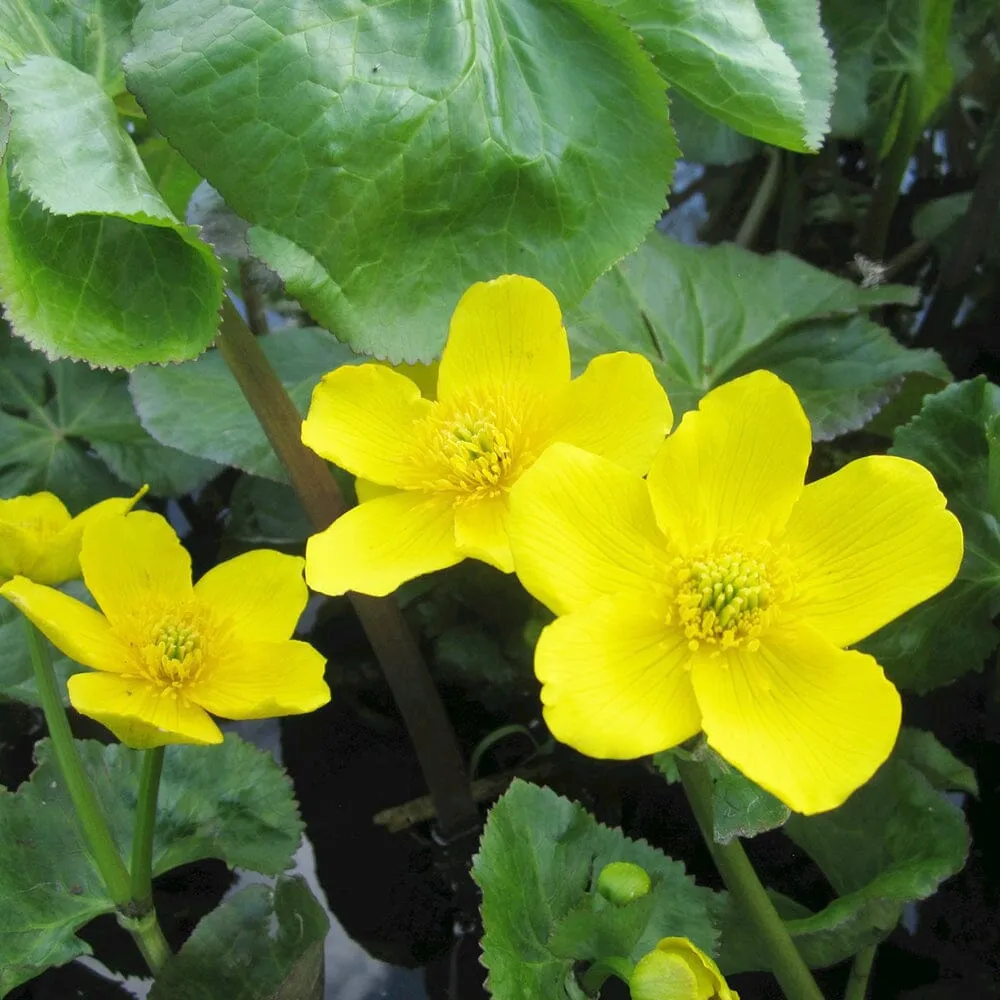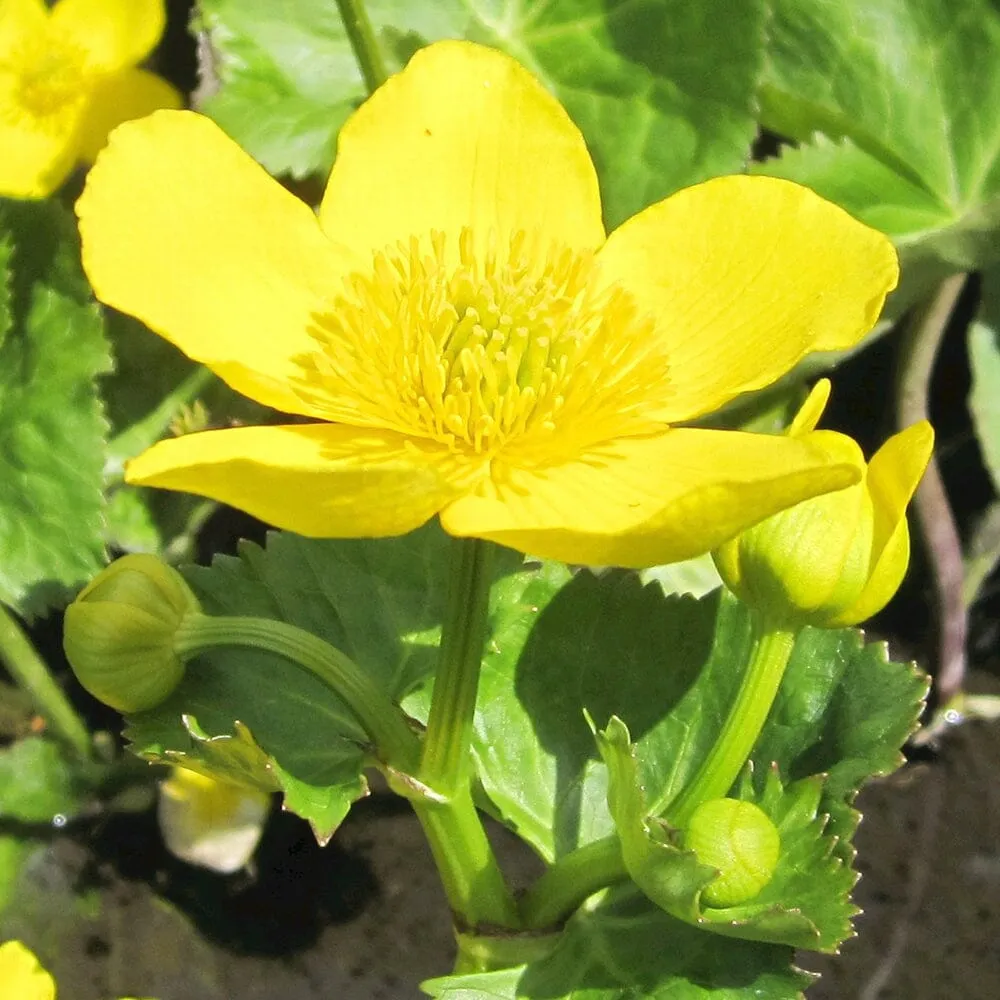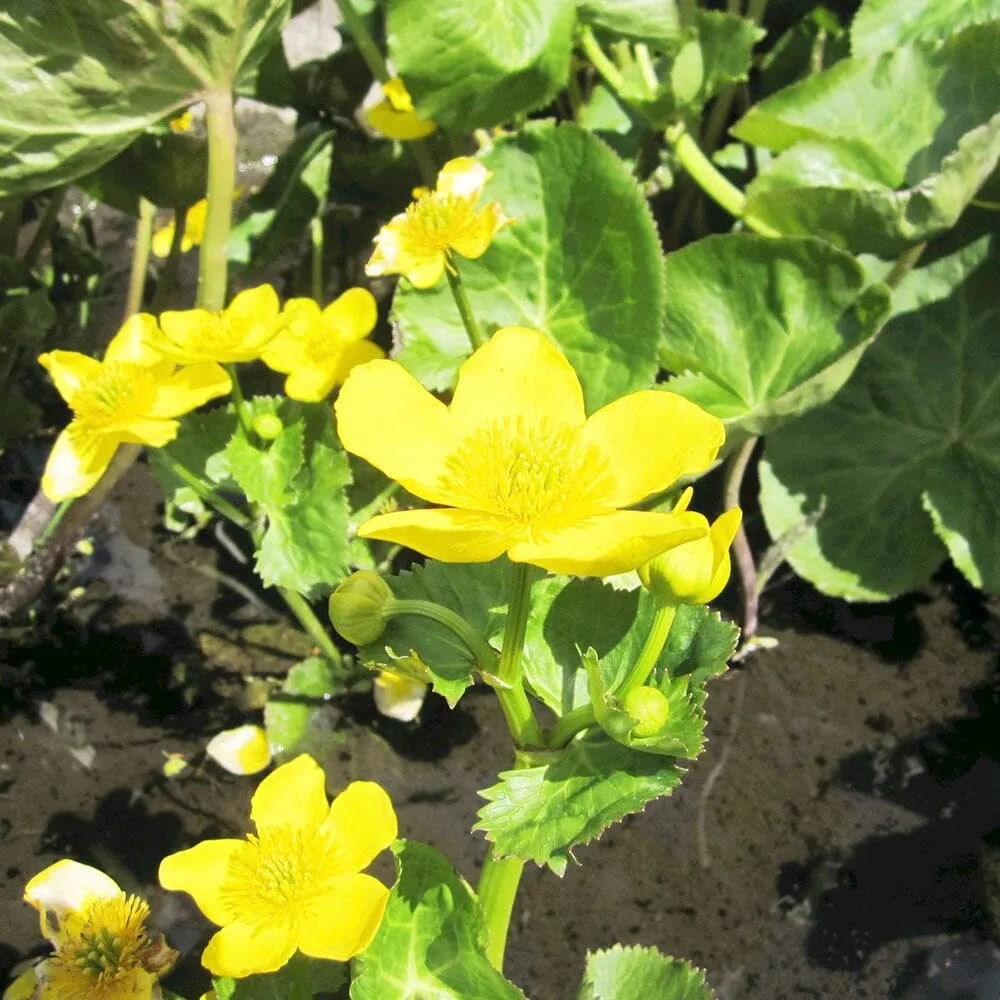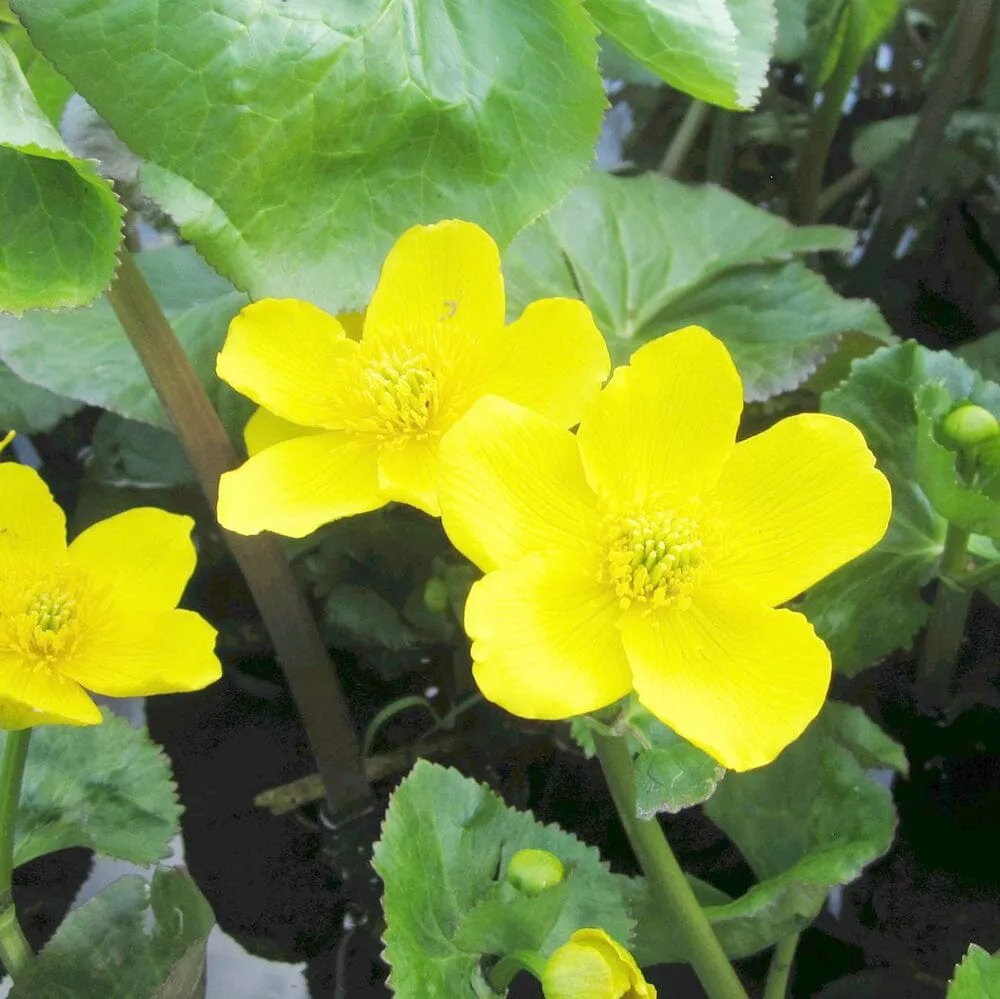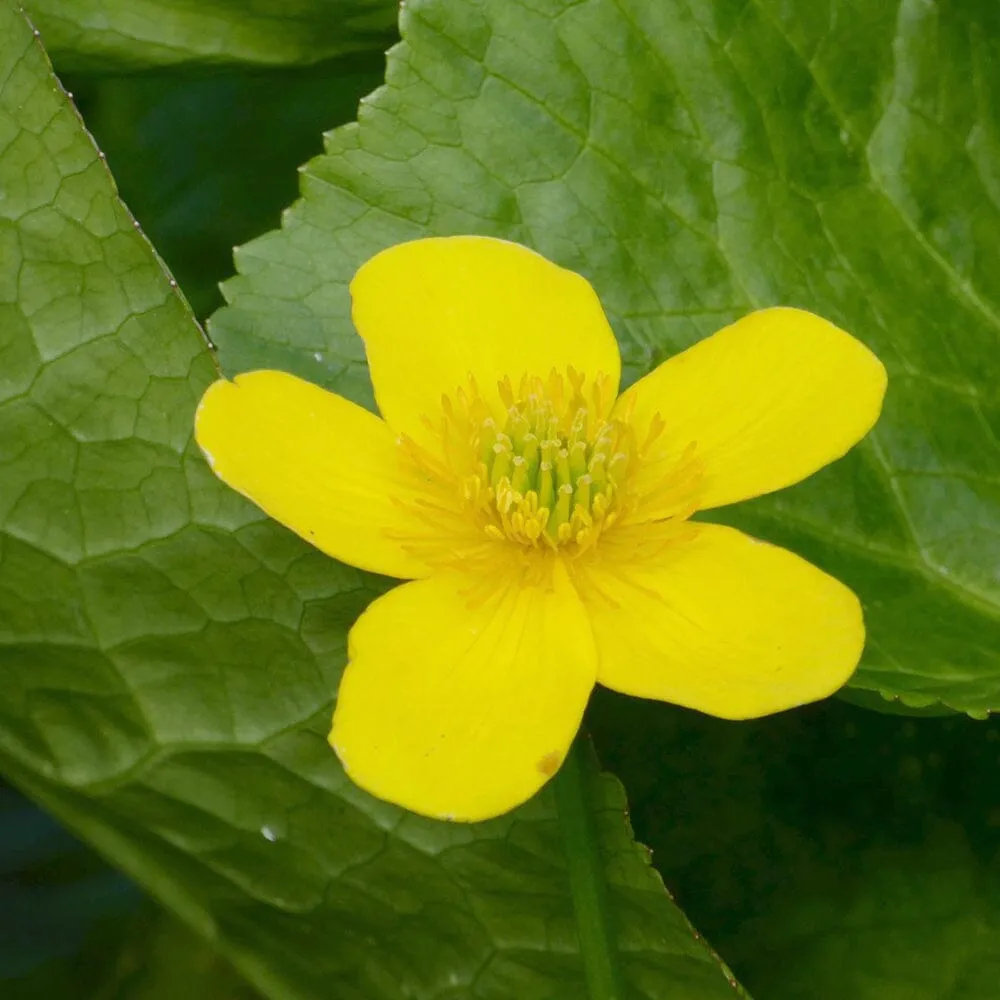Caltha palustris polypetala, commonly known as the Double Marsh Marigold, is a variant of the Caltha palustris species. It is a herbaceous perennial plant belonging to the Ranunculaceae family. The Double Marsh Marigold is known for its vibrant yellow flowers and attractive foliage.
Here's a detailed description and care guide for Caltha palustris polypetala:
Description:
Caltha palustris polypetala grows as a clump-forming plant with heart-shaped, glossy green leaves. The foliage emerges in early spring and creates a lush carpet of green throughout the growing season. The plant typically reaches a height of 30-60 cm (12-24 inches) and has a spread of 45-60 cm (18-24 inches). The most distinguishing feature of this variety is its double-flowered blooms. The flowers are bright yellow, large, and pom-pom-like in appearance. They can have numerous petals, creating a full and showy display. The Double Marsh Marigold blooms from late spring to early summer, attracting pollinators like bees and butterflies to the garden.
Care Guide:
Light: Caltha palustris polypetala thrives in full sun to partial shade. It prefers a location with at least 4-6 hours of direct sunlight per day. In hotter regions, it benefits from some afternoon shade to protect it from intense heat.
Water: This plant prefers consistently moist to wet soil. It is well-suited to boggy or waterlogged areas, making it an excellent choice for water gardens or pond edges. Ensure the soil remains evenly moist, but avoid excessive standing water, as it can lead to root rot. Regular watering is necessary during dry periods.
Soil: Caltha palustris polypetala prefers rich, humusy soil that is acidic to neutral. It grows well in moist, loamy soil but can tolerate a range of soil types, including clay. Amending the soil with organic matter, such as compost or well-rotted manure, before planting can improve fertility and drainage.
Temperature: This variety is cold-hardy and can thrive in USDA hardiness zones 3-7. It can tolerate cool temperatures and is even capable of flowering in early spring when temperatures are still chilly. In warmer regions, it appreciates some shade and protection from extreme heat.
Fertilizer: Caltha palustris polypetala generally doesn't require heavy fertilization. Incorporating compost or a balanced slow-release fertilizer into the soil during the growing season can provide the necessary nutrients. Avoid excessive nitrogen fertilizers, as they can promote lush foliage growth at the expense of flowering.
Mulching: Applying a layer of organic mulch around the plants can help conserve soil moisture, suppress weed growth, and regulate soil temperature. Maintain a mulch depth of 5-7 cm (2-3 inches) and keep it a few centimeters away from the base of the plant.
Pruning: Caltha palustris polypetala doesn't require extensive pruning. However, you can remove spent flowers to encourage prolonged blooming. In late fall or early spring, you can cut back the foliage to ground level to rejuvenate the plant for the upcoming season.
Pests and Diseases: This plant is generally resistant to pests and diseases. However, keep an eye out for slugs or snails, especially in damp conditions. Proper spacing and good air circulation can help prevent fungal diseases like powdery mildew.
Caltha palustris polypetala is an attractive and low-maintenance perennial that adds a splash of vibrant yellow color to wetland gardens, pond edges, or other moist areas in the landscape. By providing the right growing conditions, you can enjoy its beautiful double flowers and lush green foliage throughout the spring and early summer.

